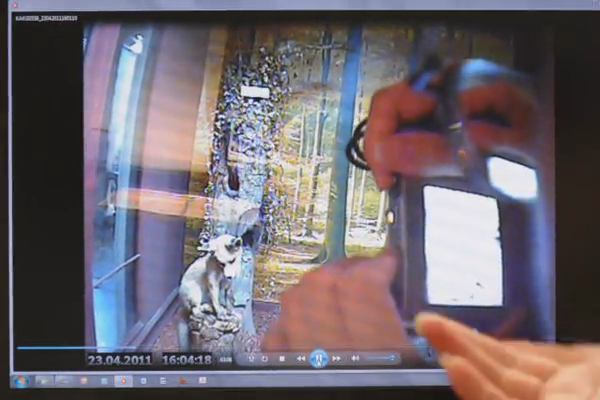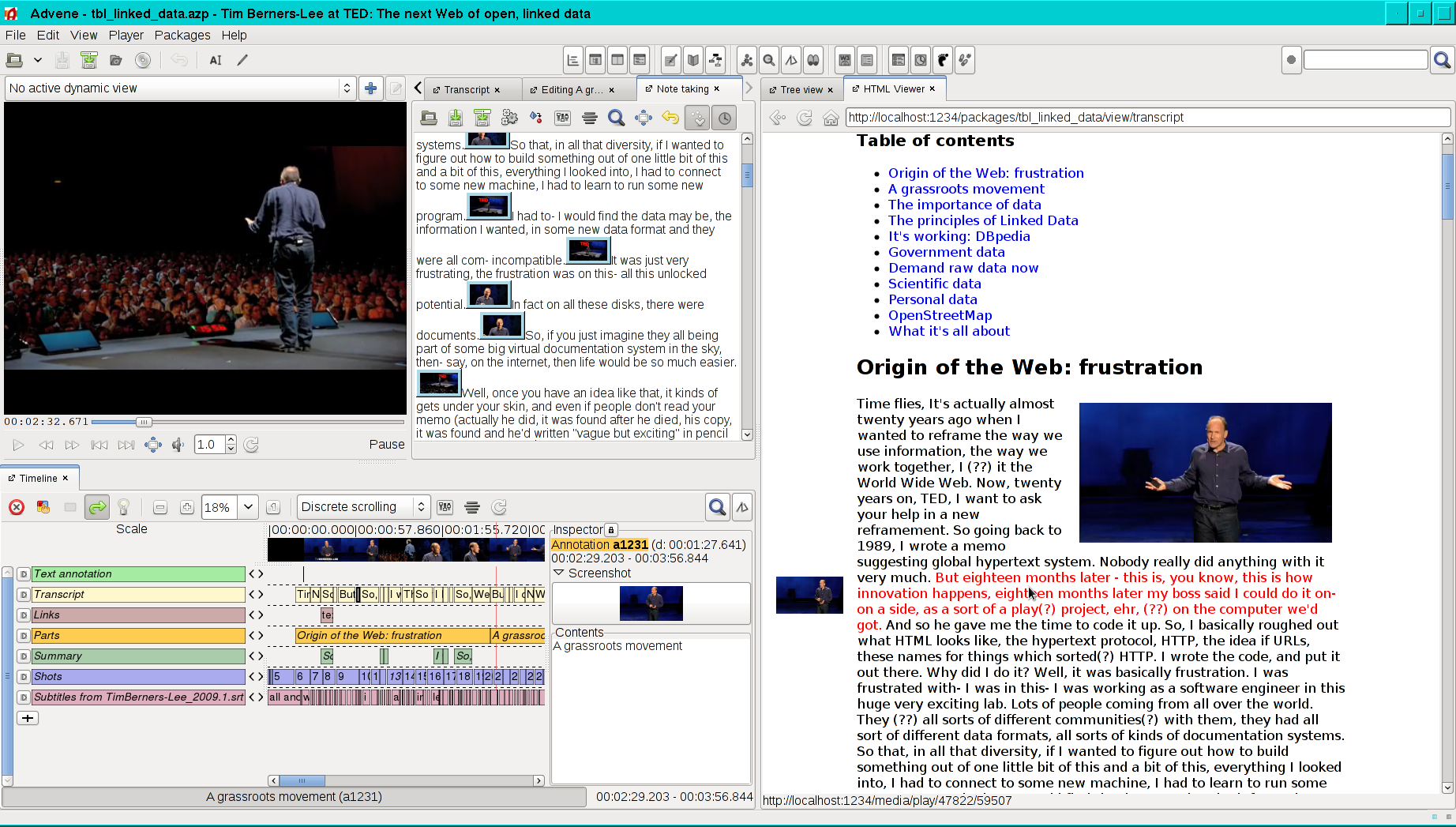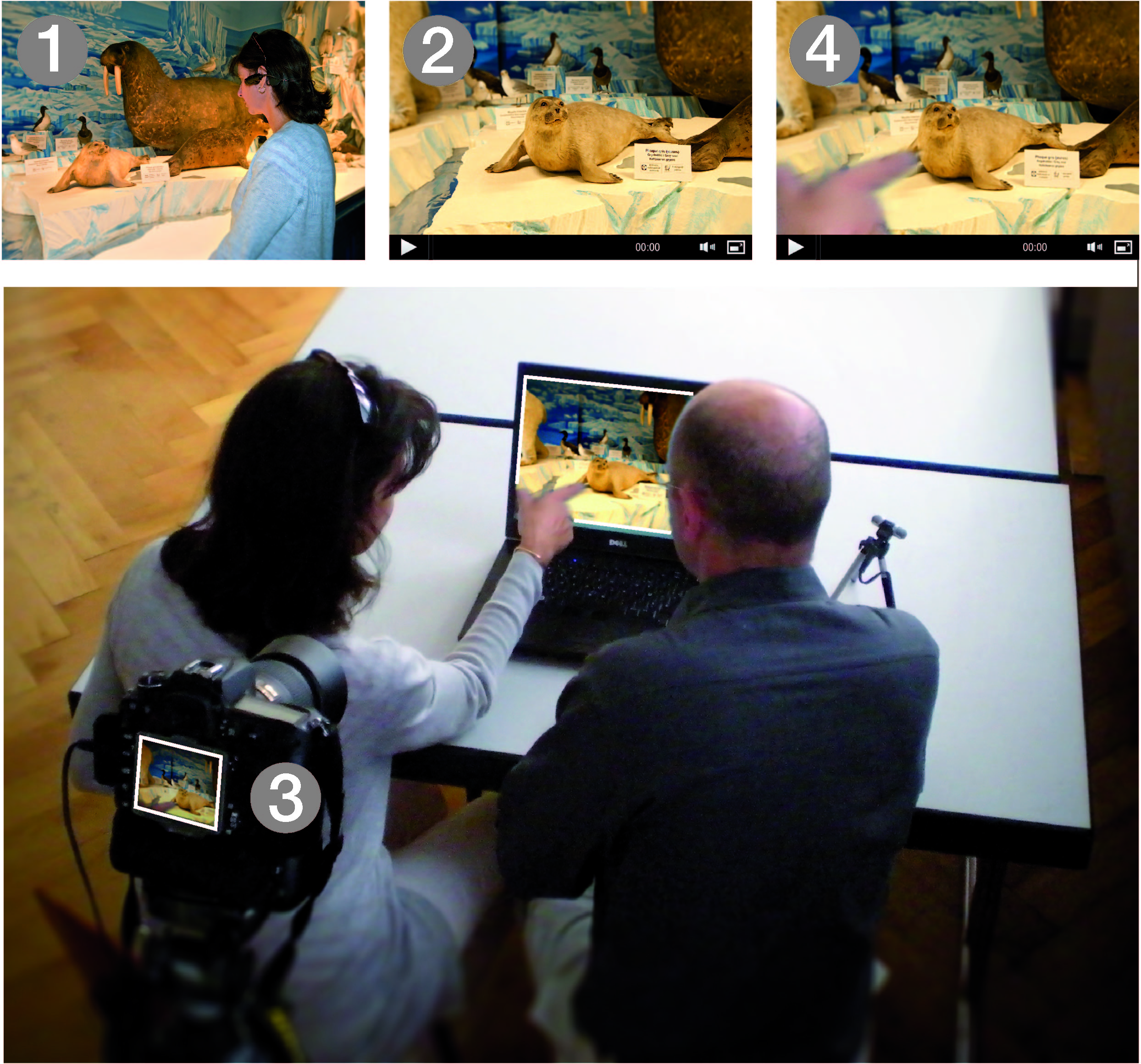Advene as a Tailorable Hypervideo Authoring Tool: a Case Study
Use case: museography
Objective: study visitor's perception of museum exhibits through analysis of visitor video interviews

Summary
- Audiovisual active reading
- Advene tailorability
- In practice: museography use case
Audiovisual active reading
Iterative and exploratory activity
Advene

Annotate Digital Videos, Exchange on the NEt
Flexibility at different levels
- Visualizations and structure must accompany the evolution of the reflexion
- Customizable data structure
- Customizable visualizations/interfaces
- Customizable data structure
Data structure
- Generic and flexible: annotations + relations
- Explicit structure
- schemas, annotation types, relation types
- Structure and presentation definitions are also data
- schemas, annotation types, relation types
- XML and JSON serializations
- User-defined on-the-fly
Generating visualizations
- XML-based template language + embedded web server
- Zope Page Templates
- Media links control the Advene video player
- Zope Page Templates
- Web publication principle: specialized web crawler
- makes a copy of generated files
- injects javascript code to embed a video player and interaction code
- converts video links to MediaFragment URLs
- makes a copy of generated files
- Example output: Online version - Local copy
Documentary status
- Multiple forms for the (exchangeable) data:
- Structured (.azp package)
- Dynamically generated HTML
- Static HTML
- Structured (.azp package)
- Different document forms for different collaboration modalities
- Advene package (sharing annotations + potentially dynamic HTML document)
- Generated HTML (sharing analyses)
- Advene package (sharing annotations + potentially dynamic HTML document)
Technical setup

Analysis process
- Transcribe interview (note-taking view)
- Identify hexadic signs (from course-of-action methodology)
- Use relations to express courses of experience
- Generate visualizations
- Write analyses
- Publish on the web: http://www.museographie.fr/

Demonstration
- Advene interface
- Generated hypervideo document
Dynamically generated - Online copy - Local copy
Conclusion
- User feedback
- A good companion for active reading
- Its flexibility accomodates the exploratory nature of scholar work
- Different visualizations foster new ideas/analyzes
- A good companion for active reading
- About the process
- Technical expertise is still needed
- The collaboration enriched Advene (improved web export, etc)
- Ongoing reflexion on the relations between data, structure and presentation
 Public example analyses at http://www.museographie.fr/
Public example analyses at http://www.museographie.fr/
- Technical expertise is still needed
Course-of-action methodology
- 6 hexadic signs
- Involvement in the situation, Potential actuality, Referential, Representamen, Unit of course of experience and Interpretant
- Involvement in the situation, Potential actuality, Referential, Representamen, Unit of course of experience and Interpretant
- Building blocks for "courses of experience"
Setting things up
- No predefined structure
- How to best express the methodology?
- Multiple tries lead to:
- one annotation type per hexadic sign
- relations express common courses of experience
- one annotation type per hexadic sign
- How to best express the methodology?
- Beyond basic visualizations (timeline, transcription)
- Define hypervideo templates
- Transcription + hexadic signs in parallel
- Transcription + hexadic signs in parallel
- Define hypervideo templates